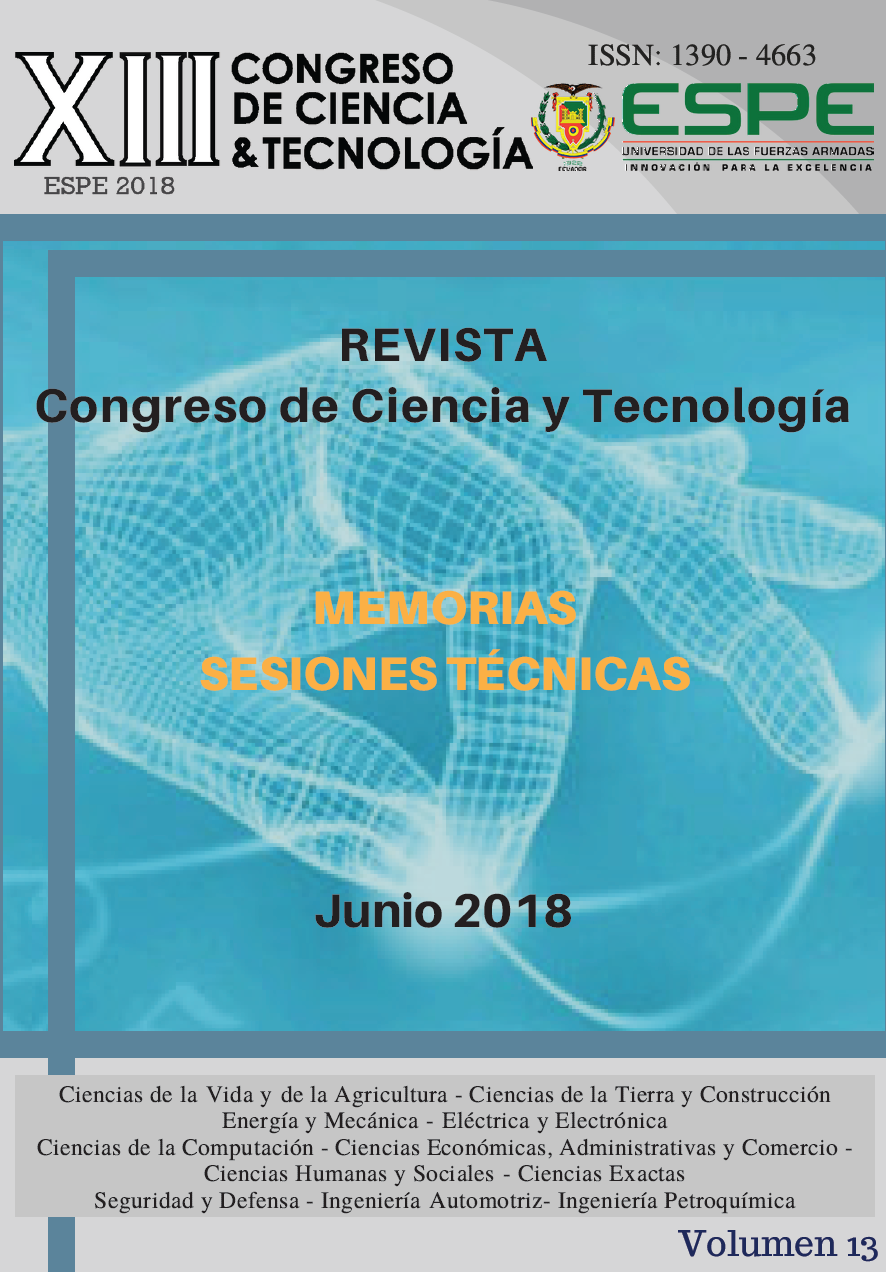Effect of organic solvents in morphology and mechanical properties of electrospun polyvinylpyrrolidone fibers
DOI:
https://doi.org/10.24133/cctespe.v13i1.790Resumen
In this work, the electrospinning technique was used to obtain fibers for mechanical characterization. polyvinylpyrrolidone (PVP) was combined with organic solvents (ethanol and dimethylformamide (DMF)) to generate solutions, looking for the appropriate parameters to obtain fibers with the best morphology and the best mechanical properties. Starting from previous investigations to find the adequate percentages of solvent and PVP, several solutions were made, varying the different parameters like voltage, flow, tip collector distance. Seeking to obtain acceptable samples, the diameter was measured in a scanning electron microscope (SEM). The elastic modulus was measured for the fibers with the best aspect. Mechanical properties were measured in an atomic force microscope (AFM) with the Hertz contact method and the data were approximated to its mathematical model. The solutions that resulted in the best morphological properties were: ethanol - 8% PVP, DMF – 14% PVP, 70% ethanol - 30% DMF - 8% PVP, with diameters in the micrometer range of 1.6, 1.22 and 1.35 respectively, and elastic modulus of 40.08 MPa, 8.8 MPa and 32.78 MPa correspondingly. An analysis of all the parameters influencing the process was performed and an analysis of the influence of the solvents, based on the data of the elastic moduli was carried out.
Descargas
Publicado
Número
Sección
Licencia
Los autores que publican en el Congreso de Ciencia y Tecnología están de acuerdo con los siguientes términos: Los autores conservan los derechos de autor y garantizan al congreso el derecho de ser la primera publicación del trabajo al igual que licenciado bajo una Creative Commons Attribution License que permite a otros compartir el trabajo con un reconocimiento de la autoría del trabajo y la publicación inicial en el congreso. Los autores pueden establecer por separado acuerdos adicionales para la distribución no exclusiva de la versión de la obra publicada en el congreso (por ejemplo, situarlo en un repositorio institucional o publicarlo en un libro), con un reconocimiento de su publicación inicial en este congreso. Se permite y se anima a los autores a difundir sus trabajos electrónicamente (por ejemplo, en repositorios institucionales o en su propio sitio web) antes y durante el proceso de envío, ya que puede dar lugar a intercambios productivos, así como a una citación más temprana y mayor de los trabajos publicados.

